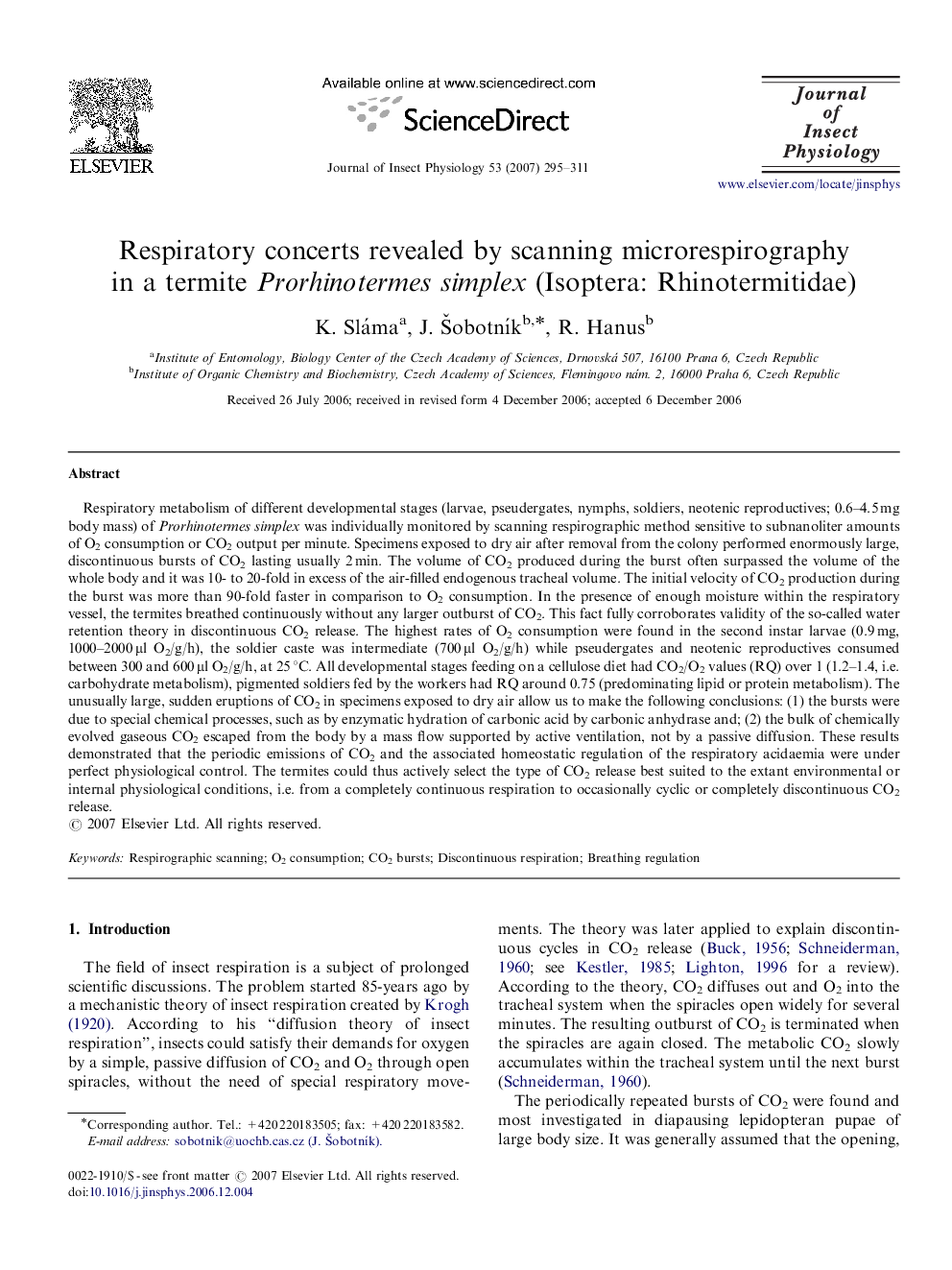| کد مقاله | کد نشریه | سال انتشار | مقاله انگلیسی | نسخه تمام متن |
|---|---|---|---|---|
| 2841640 | 1165417 | 2007 | 17 صفحه PDF | دانلود رایگان |

Respiratory metabolism of different developmental stages (larvae, pseudergates, nymphs, soldiers, neotenic reproductives; 0.6–4.5 mg body mass) of Prorhinotermes simplex was individually monitored by scanning respirographic method sensitive to subnanoliter amounts of O2 consumption or CO2 output per minute. Specimens exposed to dry air after removal from the colony performed enormously large, discontinuous bursts of CO2 lasting usually 2 min. The volume of CO2 produced during the burst often surpassed the volume of the whole body and it was 10- to 20-fold in excess of the air-filled endogenous tracheal volume. The initial velocity of CO2 production during the burst was more than 90-fold faster in comparison to O2 consumption. In the presence of enough moisture within the respiratory vessel, the termites breathed continuously without any larger outburst of CO2. This fact fully corroborates validity of the so-called water retention theory in discontinuous CO2 release. The highest rates of O2 consumption were found in the second instar larvae (0.9 mg, 1000–2000 μl O2/g/h), the soldier caste was intermediate (700 μl O2/g/h) while pseudergates and neotenic reproductives consumed between 300 and 600 μl O2/g/h, at 25 °C. All developmental stages feeding on a cellulose diet had CO2/O2 values (RQ) over 1 (1.2–1.4, i.e. carbohydrate metabolism), pigmented soldiers fed by the workers had RQ around 0.75 (predominating lipid or protein metabolism). The unusually large, sudden eruptions of CO2 in specimens exposed to dry air allow us to make the following conclusions: (1) the bursts were due to special chemical processes, such as by enzymatic hydration of carbonic acid by carbonic anhydrase and; (2) the bulk of chemically evolved gaseous CO2 escaped from the body by a mass flow supported by active ventilation, not by a passive diffusion. These results demonstrated that the periodic emissions of CO2 and the associated homeostatic regulation of the respiratory acidaemia were under perfect physiological control. The termites could thus actively select the type of CO2 release best suited to the extant environmental or internal physiological conditions, i.e. from a completely continuous respiration to occasionally cyclic or completely discontinuous CO2 release.
Journal: Journal of Insect Physiology - Volume 53, Issue 4, April 2007, Pages 295–311